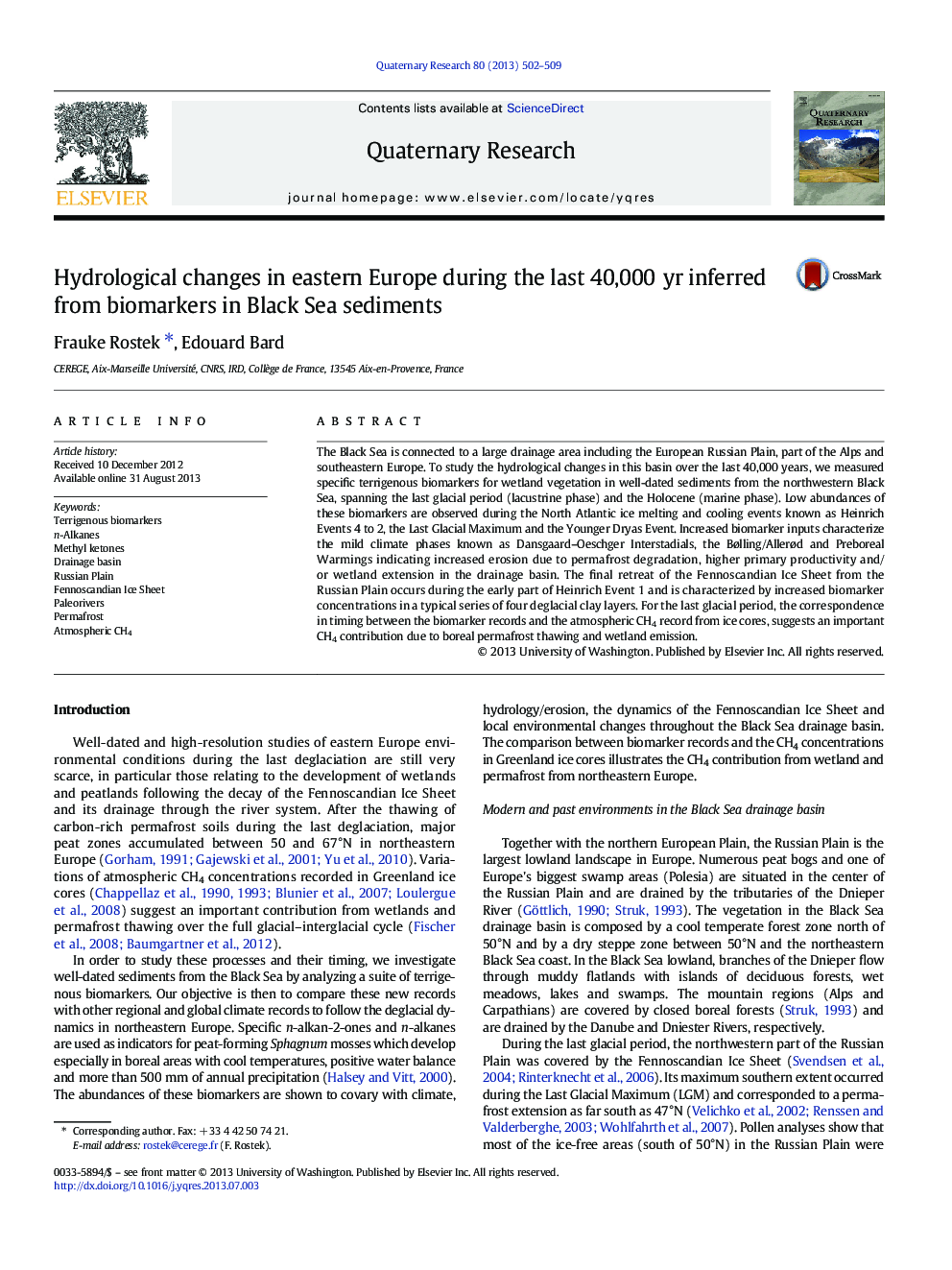| Article ID | Journal | Published Year | Pages | File Type |
|---|---|---|---|---|
| 1045296 | Quaternary Research | 2013 | 8 Pages |
The Black Sea is connected to a large drainage area including the European Russian Plain, part of the Alps and southeastern Europe. To study the hydrological changes in this basin over the last 40,000 years, we measured specific terrigenous biomarkers for wetland vegetation in well-dated sediments from the northwestern Black Sea, spanning the last glacial period (lacustrine phase) and the Holocene (marine phase). Low abundances of these biomarkers are observed during the North Atlantic ice melting and cooling events known as Heinrich Events 4 to 2, the Last Glacial Maximum and the Younger Dryas Event. Increased biomarker inputs characterize the mild climate phases known as Dansgaard–Oeschger Interstadials, the Bølling/Allerød and Preboreal Warmings indicating increased erosion due to permafrost degradation, higher primary productivity and/or wetland extension in the drainage basin. The final retreat of the Fennoscandian Ice Sheet from the Russian Plain occurs during the early part of Heinrich Event 1 and is characterized by increased biomarker concentrations in a typical series of four deglacial clay layers. For the last glacial period, the correspondence in timing between the biomarker records and the atmospheric CH4 record from ice cores, suggests an important CH4 contribution due to boreal permafrost thawing and wetland emission.
